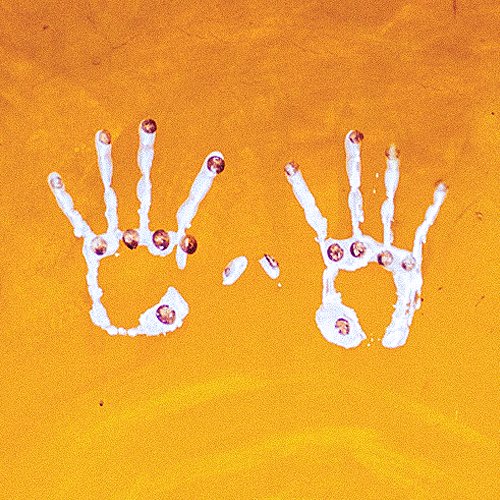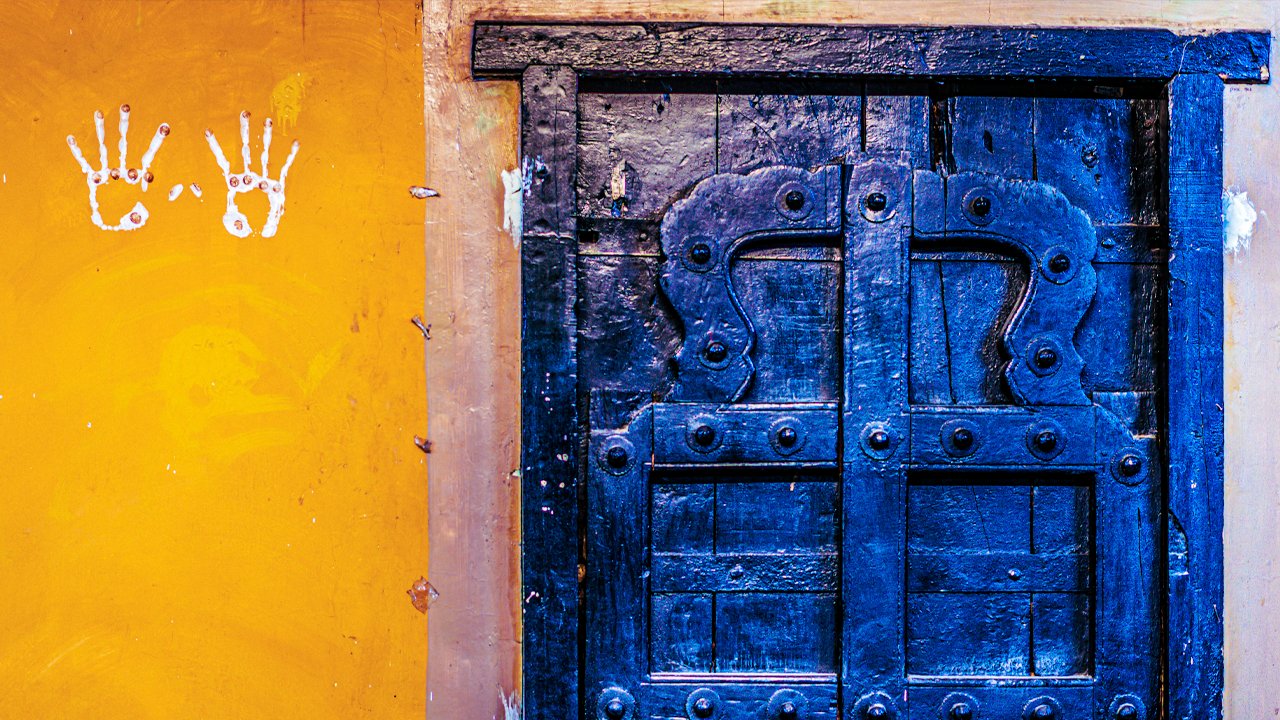
In celebration of her new podcast, Mirabai Bush illuminates her journey through India alongside Ram Dass, to the feet of Maharajji, and into the heart of loving awareness.
Listen to the debut episode of Mirabai Bush’s: Walking Each Other Home podcast, featuring John Densmore, the iconic drummer of The Doors. The two friends share about music, poetry, spirituality, Ram Dass, the silence between notes, and channeling the pulse of the universe, on Ep. 1: The New Normal of Love
Mirabai Bush: A Journey East
1970, Bodh Gaya, India. I was there because I had met Sharon Salzberg on the street in Delhi, my second day in India, after a long journey overland from London. She and I had been at the same university at home, and she told me that a Burmese teacher named S.N. Goenka was going to teach the first-ever meditation retreat for Westerners in the very place where the Buddha had been enlightened. It sounded like simply the best thing to do in India, although I had not before that ever thought about learning to meditate. A few days later, with my then-partner John, I took the train and a rickshaw and landed in Bodh Gaya.
Back then, Bodh Gaya was a tiny, dusty Indian village, home of the Mahabodhi Stupa—a stupendous monument erected by Emperor Asoka some 250 years before the time of Christ, situated beside a living offshoot of the actual tree under which the Buddha sat in meditation more than two thousand years ago. Other than the stupa and a few small temples, there were few facilities other than the old Burmese vihara, a collection of monks’ cells clustered around a main hall. This was where the retreat would be held, and the rickshaw wallah dropped us right in front.
As I climbed out and onto the dusty road with my backpack and bedroll, I saw a Westerner in Indian clothes talking to some young men. He was clearly the center of attention, and as I moved nearer, I heard what they were discussing—how many cookies to buy from the chai wallah before the retreat began. John recognized him immediately—Ram Dass had given him his first LSD in Buffalo in the Sixties, not something one forgets. So, I met Ram Dass there, outside the monastery wall that would keep us all inside for several months, and he was magnetic and charismatic, even talking about cookies.
We sat that retreat together, many of us, including people who became my lifelong friends, like Ramesh, Krishna Das, Danny Goleman, Wes and Mudita Nisker, Joseph Goldstein, Sharon, Tukaram and Sita, Dwarka, Hari Nam and Mariam. Of course, back then we all had names like Jeff and Jim and Jody and Linda, which was my name before Maharajji changed it.
For female perspective on Neem Karoli Baba, Maharajji, explore the Divine Feminine with Mirabai, Parvati, Radha, and Nina on Ep.65 of the BHNN Guest Podcast
Ram Dass & ‘The Used-to-Be’s’
The retreat, and those that followed, were in silence, but in between the 10-day silent sessions there would be a few days of talking and getting to know each other. We had all traveled there on a quest for truth, and we wanted to hear each other’s stories after sitting close together for so many days and nights without speaking. Ram Dass kept trying to return us to being here now and letting go of the old identities. When we would tell the stories, he’d call us “The Used-to-be’s.” I used to be a Catholic girl, an editor, an Air Force wife, an aerospace consultant, a graduate student, a hippie. And that was just me. “I used to be a Harvard professor,” Ram Dass would say, “but now I am intoxicated with God” (even though we were in a Buddhist monastery). Once, on an in-between evening, he began to sing Sri Ram Jai Ram, which seemed very radical at the time, since Goenka had cautioned us about Hindu gurus, and we all dropped into a space of devotion, which felt sweetly familiar to me even though I didn’t understand it yet.
I was beginning to realize that there was much I didn’t understand. Sitting and watching my mind for days and weeks, I was questioning everything I had thought or believed in before arriving in Bodh Gaya. One night under a new moon, I was standing next to Ram Dass on the roof of the vihara, a flat roof where many of us slept on mats. We were talking about our lives and how everything we had experienced was what he later called “grist for the mill.” It was all so that we could wake up, see things as they are. I sort of understood that, I thought. It sounded good. And then I looked up at the stars against the dark sky—there seemed to be millions of them—and all of a sudden everything made sense. The interconnection of everything—I got it, right there in that moment. I looked at Ram Dass, thinking but, not saying, “Oh my god, this is what it’s all about?” He knew what had happened, and he looked back at me, and said, “Yes.”
Join Mirabai Bush and Ram Dass in loving awareness, as they share what it means to be ‘walking each other home,’ on Ep.133 of Here & Now
Being Here Now
In the days between courses we also explored Bodh Gaya. We visited the holy Bodhi Tree and Mahabodhi Temple, which was buried for a while under sand until a British archeologist restored it. There were other temples there too, and we met teachers from these traditions—Japanese Zen, Thai, and some of the first Tibetan teachers in India, Lama Zopa and Lama Yeshe. It had only been about 10 years since the Dalai Lama and others had escaped over the mountains.
It was during those months in Bodh Gaya that the first copy of Be Here Now, in the boxed form of the first edition, arrived in India. Only one copy, and at a time when there were no copying machines, let alone e-books. Everyone wanted to read that one copy. I was near the bottom of the list, because unlike many of the others who had known Ram Dass in America, I not only didn’t know him then, but I had actually never heard of him until I reached India.
But then the Goenka courses, which began as one and stretched into one after another, came to an end, and it was time to leave. I still hadn’t read Be Here Now. Ram Dass had agreed to meet Swami Muktananda, with whom he had traveled to Australia and other places, in Delhi. It was for Shiva Ratri, the annual festival honoring Lord Shiva with an all-night chanting of the name of Shiva, “Om Namah Shivaya.” Ram Dass was really on a journey to find Maharajji again, but his first stop would be Delhi. Many of us wanted to go along, so we found the driver who had brought us overland across the Hindu Kush and his big Mercedes bus, which could hold all 18 of us who wanted to go.
Come together with Mirabai Bush, Sharon Salzberg, and Raghu Markus, as they remember Ram Dass’ life, legacy, joy, and wisdom, on Ep.114 of the Metta Hour
The Bus Trip…
Between Delhi and Bodh Gaya, if you went that way, was Allahabad, the place where three sacred Indian rivers converge—the Ganges, the Jamuna, and the Saraswati, which runs underground. It is believed that at this place, the Sangam, a few drops of the nectar Amrit Bindu fell, making its waters truly magical. It is during the Kumbh Mela, held every 12 years, that the Sangam truly comes alive, attracting sadhus and seekers from all across the country. 1971 was one of those years. Danny had left the monastery for a few days and visited the Mela, and wanted us all to at least see the site, although the Mela was over. There was much discussion of this possibility—Ram Dass wanted to go directly to Delhi; this seemed like a distraction. But Danny was adamant. The place was sacred. The event had been historic. We shouldn’t miss it. Ram Dass finally relented and the bus made its way toward Allahabad.
It was on the bus that it was finally my turn to read Be Here Now. I loved it! It described just what I was learning, and Ram Dass’ own story—his story—was very familiar. Although the externals were different, it perfectly described what I had gone through—the unsatisfactoriness of material life in the West, the yearning for meaning, the desire to live a life that was true to what I was beginning to see were my deepest values.
I had just reached the part of the story when Ram Dass meets Maharajji, who sees him and knows him and loves him. Wow, I thought, maybe Goenka wasn’t exactly right about gurus. But of course if it’s all within us, what do we need a guru for? (Chogyam Trungpa later said: You need a guru to tell you it’s all within you.) I was mulling over these thoughts as we pulled into Allahabad. “We’re almost there,” Danny said, “the place where the sadhus had all bathed to purify themselves.” Next thing I heard, Ramesh said, “There’s Maharajji.” And there he was. In front of the Hanuman Temple, at the auspicious site, just standing there, wrapped in a blanket. Ram Dass became radiant— he leapt off the bus. Maharajji! Maharajji! The others followed. I was nearly the last. I had the utterly self-absorbed thought, “Oh Maharajji, you didn’t have to do this for me. I would have believed!” I stumbled down the bus steps. And then I, the intellectual graduate student of literature, who carried Mao’s Little Redbook around for a year, found myself prostrate at the feet of an Indian guru, and my life changed forever.”
– Mirabai Bush

